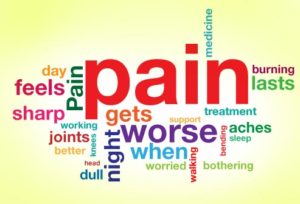
Recently Diagnosed or Relapsed? Stop Looking For a Miracle Cure, and Use Evidence-Based Therapies To Enhance Your Treatment and Prolong Your Remission
Multiple Myeloma an incurable disease, but I have spent the last 25 years in remission using a blend of conventional oncology and evidence-based nutrition, supplementation, and lifestyle therapies from peer-reviewed studies that your oncologist probably hasn't told you about.
Click the orange button to the right to learn more about what you can start doing today.
- You are here:
- Home »
- Blog »
- Multiple Myeloma »
- Myeloma – CIPN, Mucositis, LLL Therapy-
Myeloma – CIPN, Mucositis, LLL Therapy-

Conventional MM chemotherapy treatment often results in two of the most painful MM side effects possible-CIPN and/or oral mucositis (OM). Research confirms the efficacy of Low-level Light Therapy-
Multiple myeloma side effects are not only painful but can alter the course of the MM patient’s induction therapy, stem cell transplant and/or maintenance therapy plan.
Let me explain. Short term side effects such as nausea or hair loss is no big deal. Both happened to me and while these two common side effects are difficult at the time, they pass.
When I discuss chemotherapy-induced peripheral neuropathy (CIPN) and oral mucositis (OM), I’m talking about a degree of pain and suffering possibly that is life altering.
The challenge is that none of us newly diagnosed multiple myeloma patients ever think debilitating side effects will happen to us. And, in fact, statistically speaking, CIPN or OM are common but not assured. I live with low levels of CIPN and I experienced low-level OM during my stem cell transplant as well. I do not consider these two MM side effects “life altering” in my case.
The reason why I am writing this blog post is because:
- these two MM side effects are common among MM patients and
- can cause the type of pain that can cause a patient to stop his/her course of therapy
So what is the newly diagnosed MM patient supposed to do? The solution, in my opinion, is to learn about and anticipate possible MM side effects and be prepared.
Pre-habilitate before you begin your induction therapy and/or stem cell transplant.
Include evidence-based complementary therapies to your daily routine before, during and after active conventional therapies.
Most important of all, if you begin to feel CIPN (tingling, numbness, pain) and/or OM, begin evidence-based therapies such as low-level light therapy (LLLT) immediately.
To Learn more about oral mucositis- click now
To learn more about MM side effects and how to identify, prevent and possibly heal them, scroll down the page, post a question or comment and I will reply to you ASAP.
Thank you,
David Emerson
- MM Survivor
- MM Coach
- Director PeopleBeatingCancer
Recommended Reading:
- Velcade for Myeloma – Therapies for Nerve Pain?
- Resilience is Key to both Multiple Myeloma as well as MLB
- Myeloma Diagnosis- Pathology-Oncology Dysfunction- Get A Second Opinion
- Prevention of chemotherapy-induced peripheral neuropathy
Low-level laser therapy for chemotherapy-induced peripheral neuropathy.
Background: Chemotherapy induced peripheral neuropathy (CIPN) is a common and serious side effect from chemotherapy agents. Low-level laser light therapy (LLLT) devices were approved in 2002 for pain management.
Studies suggest a local release of serotonin, increased mitochondrial ATP production, or anti-inflammatory effects as a mechanism of action. We then questioned whether LLLT would show efficacy in mitigating symptoms caused by CIPN…
Results: Compared to baseline, patients receiving any amount of active treatment showed significant improvement at 8 weeks in NTX, BPI, function testing, and SF36 Mental score. Those receiving 4 weeks of placebo treatment showed improvement in only BPI, NTX and SF36 Mental score.
At 2-month follow up, all 20 patients showed a significant improvement in walking and SF 36 mental score, suggesting 4 weeks of active treatment improved function.
No significant difference in monofilament testing was observed throughout the study in either group. Direct comparison between 4 or 8 weeks of treatment vs. placebo showed a statistically significant difference in walking function at 2-months. All patients tolerated therapy well without side effects.
Conclusions: Low-level laser light therapy improved functional test over placebo and may be a viable option for non-medical management of CIPN. Further study of LLLT in CIPN is warranted.
A systematic review with meta-analysis of the effect of low-level laser therapy (LLLT) in cancer therapy-induced oral mucositis.
PURPOSE: The purpose of this study is to review the effects of low-level laser therapy (LLLT) in the prevention and treatment of cancer therapy-induced oral mucositis (OM).
METHODS: A systematic review and meta-analysis of randomised placebo-controlled trials of LLLT performed during chemotherapy or radiation therapy in head and neck cancer patients.
RESULTS: We found 11 randomised placebo-controlled trials with a total of 415 patients; methodological quality was acceptable at 4.10 (SD ± 0.74) on the 5-point Jadad scale. The relative risk (RR) for developing OM was significantly (p = 0.02) reduced after LLLT compared with placebo LLLT (RR = 2.03 (95% CI, 1.11 to 3.69)). This preventive effect of LLLT improved to RR = 2.72 (95% CI, 1.98 to 3.74) when only trials with adequate doses above 1 J were included. For treatment of OM ulcers, the number of days with OM grade 2 or worse was significantly reduced after LLLT to 4.38 (95% CI, 3.35 to 5.40) days less than placebo LLLT. Oral mucositis severity was also reduced after LLLT with a standardised mean difference of 1.33 (95% CI, 0.68 to 1.98) over placebo LLLT. All studies registered possible side-effects, but they were not significantly different from placebo LLLT.
CONCLUSIONS: There is consistent evidence from small high-quality studies that red and infrared LLLT can partly prevent development of cancer therapy-induced OM. LLLT also significantly reduced pain, severity and duration of symptoms in patients with cancer therapy-induced OM.”


